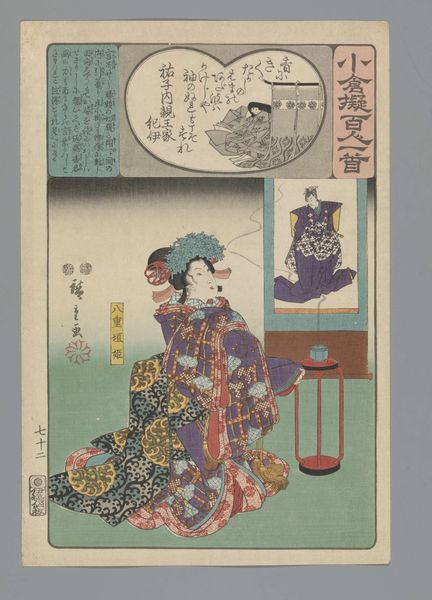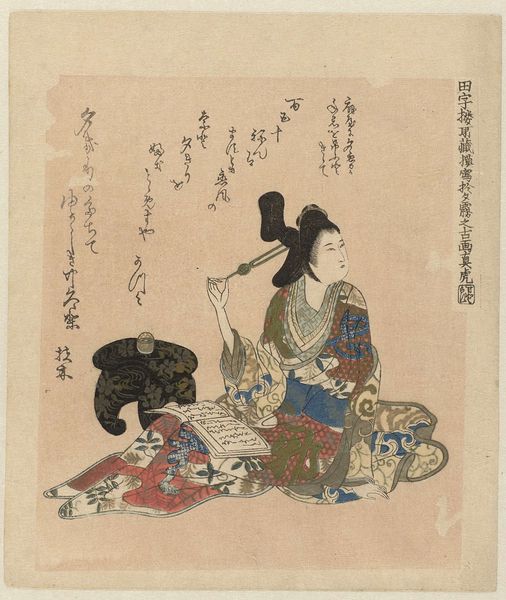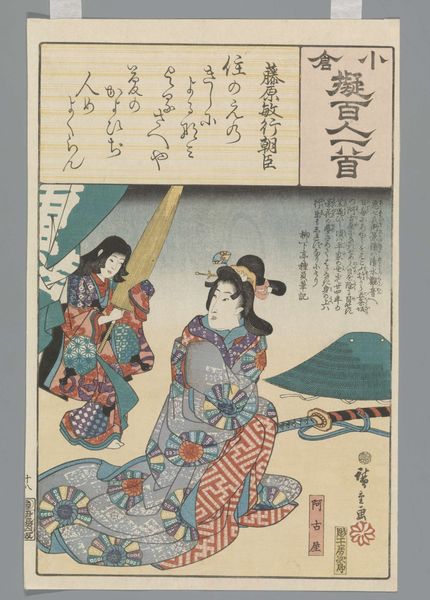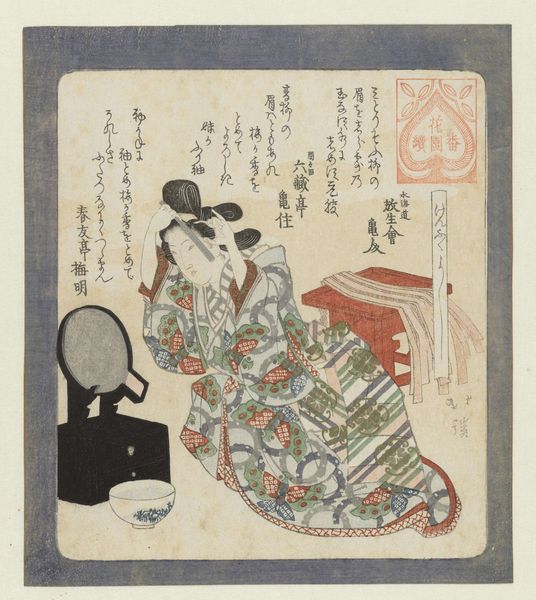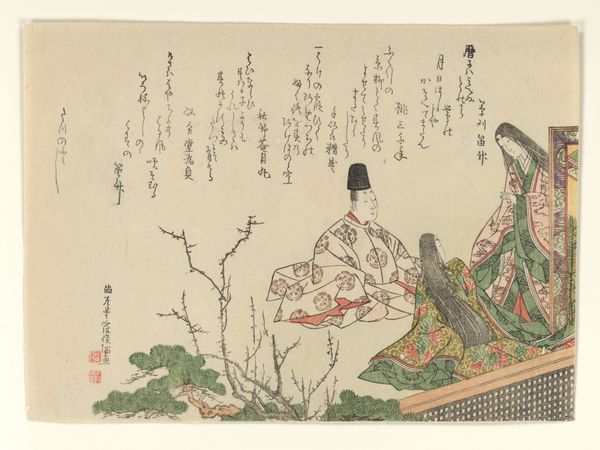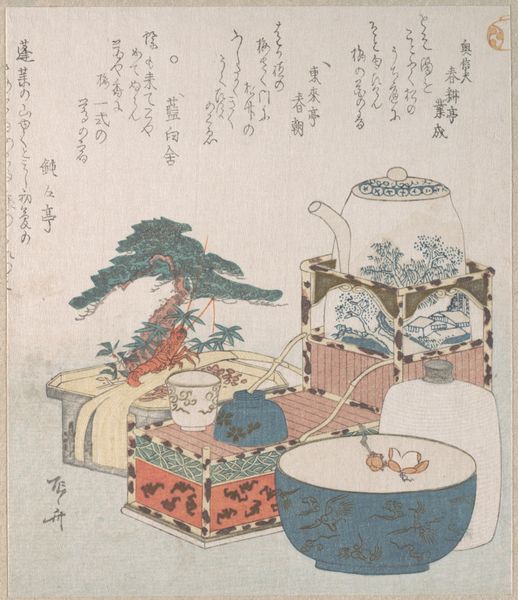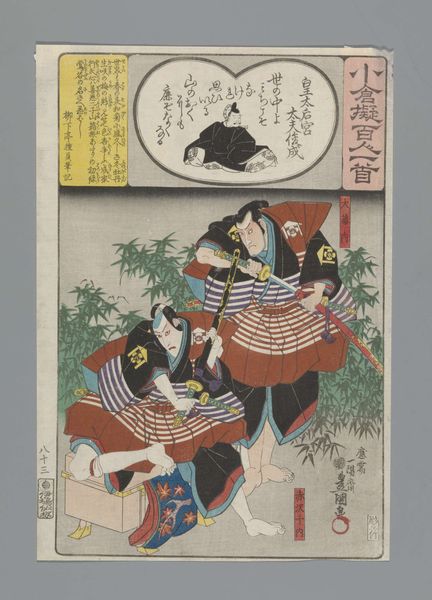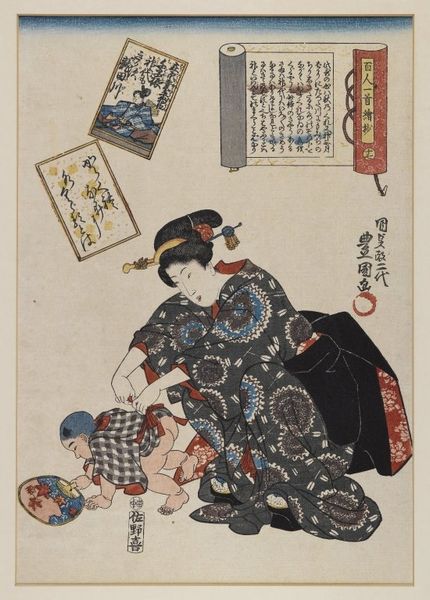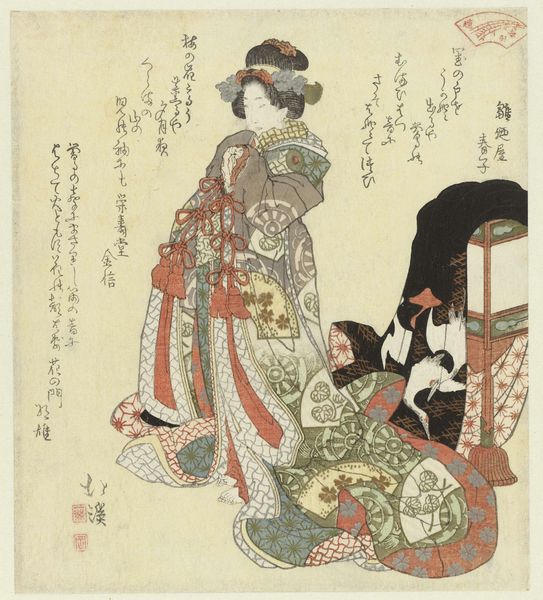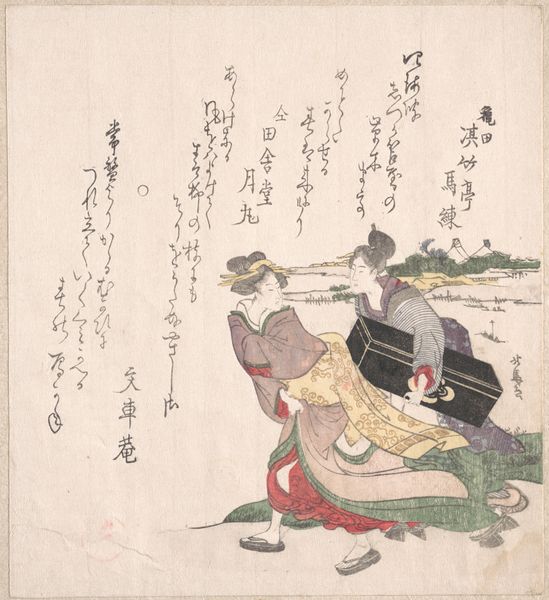
Dimensions: height mm, width mm
Copyright: Rijks Museum: Open Domain
Editor: So, here we have Hiroshige’s woodblock print, *Ogura Imitation of the One Hundred Poems*, created between 1847 and 1850. I’m struck by the intensity of the central figure, especially juxtaposed with the delicate blossoms in the background. What grabs you when you look at this piece? Curator: Isn’t it marvelous how Hiroshige pulls us into this miniature drama? It’s like peeking into a fleeting moment of a stage play, filtered through the haze of memory. I keep wondering about that determined gaze... is it fear, resolve, or something more poetic, like facing a lost love under a blossoming cherry tree? Editor: That's a lovely image! A lost love, you say? Is there any particular element of the composition that leads you to that? Curator: The poem inset at the top adds layers, don’t you think? The artist wasn't just capturing a scene, he was layering in meanings with references to classical poetry. Imagine that poem echoing the figure's emotional state, weaving this tale together into a tapestry of human emotion and nature’s fleeting beauty. Also the expression that portrait, the clothing... it all looks rather heavyhearted to me. Editor: Oh, I see that now. So the beauty isn’t just for beauty’s sake; it’s complicating the emotional story? Curator: Precisely! It's as if Hiroshige is winking at us, saying, “Life isn’t simple, is it?" But in that complexity, we find the echo of our own emotions. And tell me, does it feel particularly ephemeral? Fleeting? Editor: It does! That blend of a tense figure and serene blossoms almost aches with a sense of transient beauty. Thanks for pointing out the layers of complexity in what I initially saw as just a striking image! Curator: And thank you for helping me clarify that wistful yearning it conjures. Isn't it delightful when art sparks these personal journeys?
Comments
No comments
Be the first to comment and join the conversation on the ultimate creative platform.
